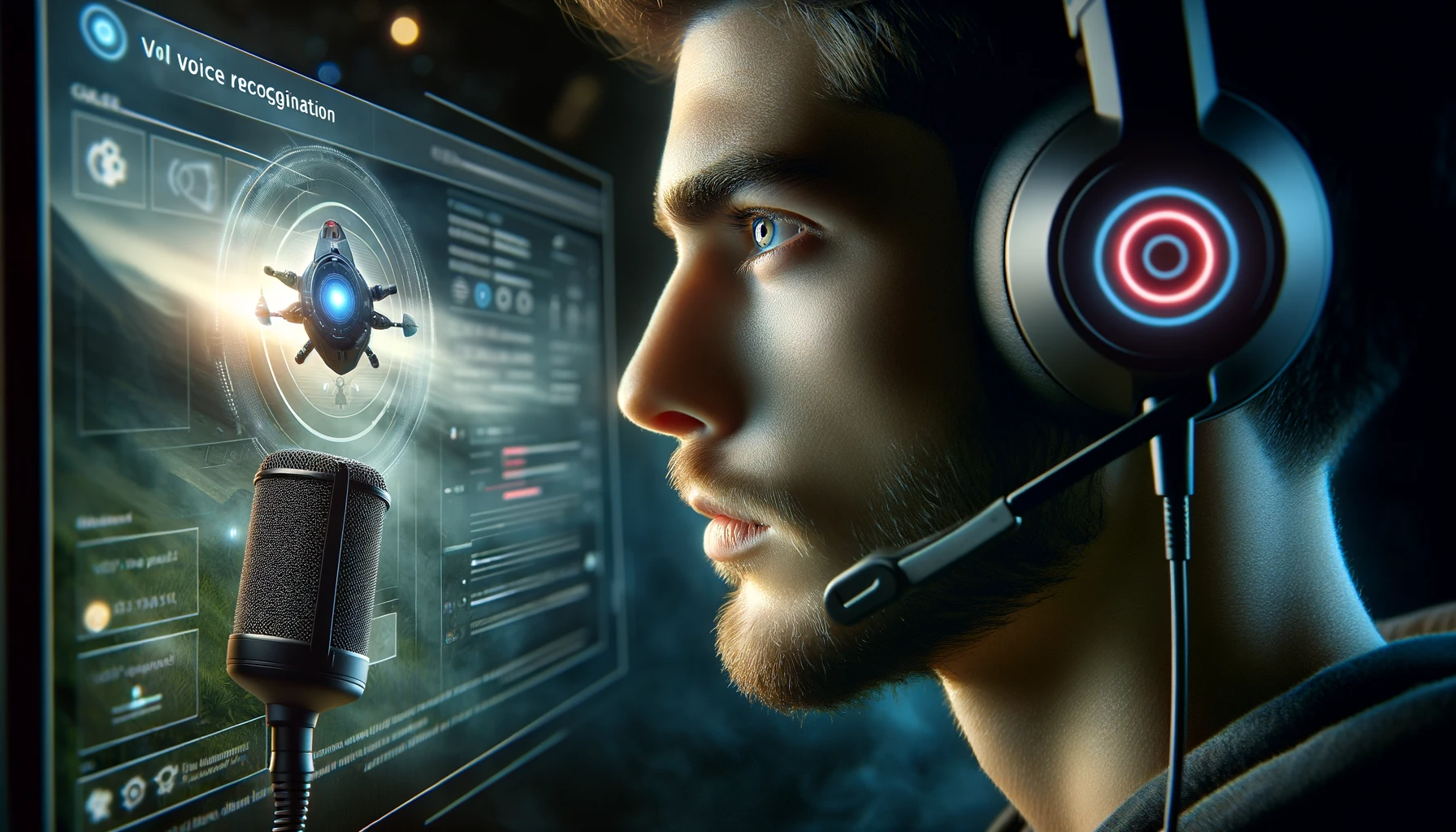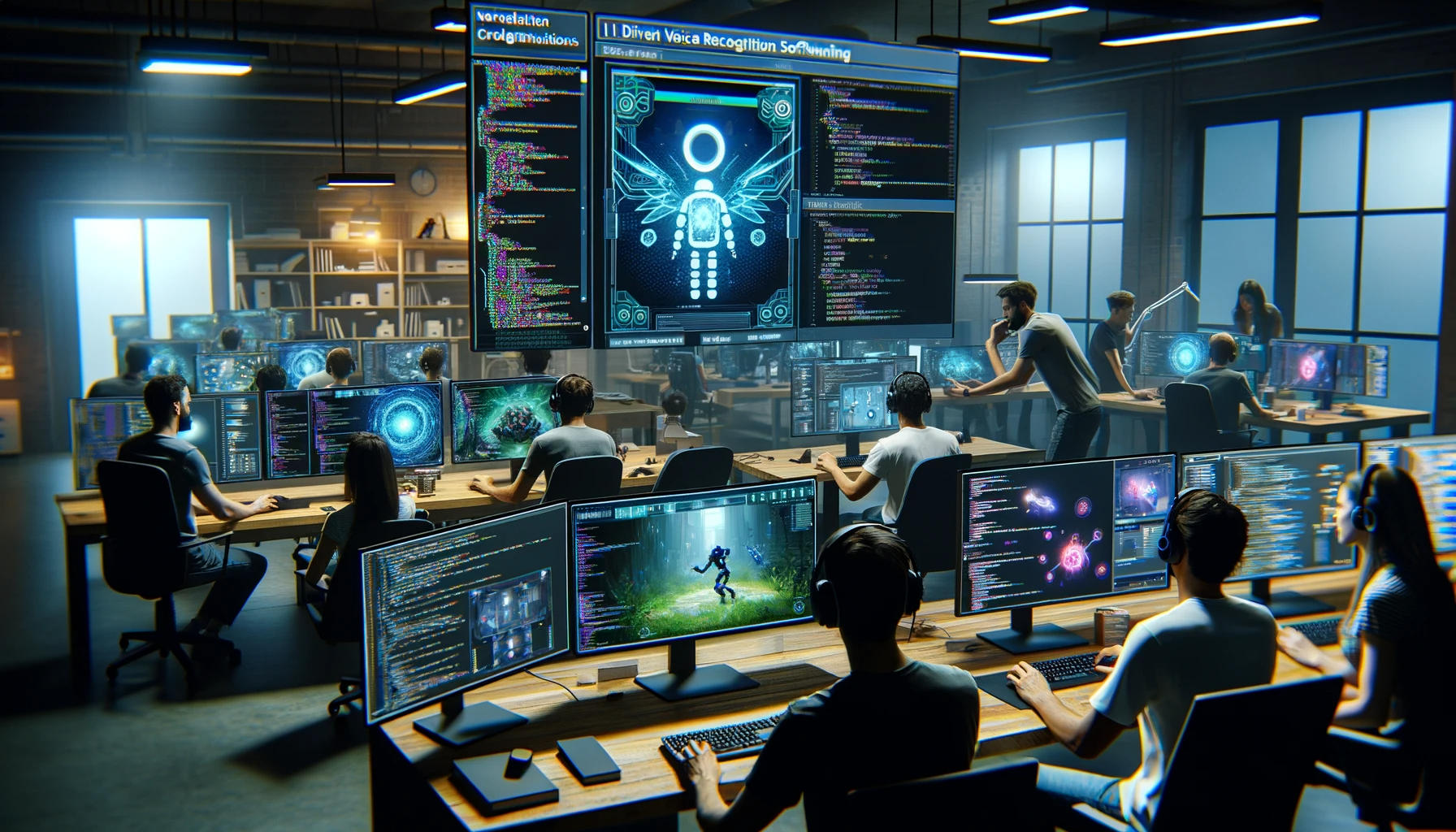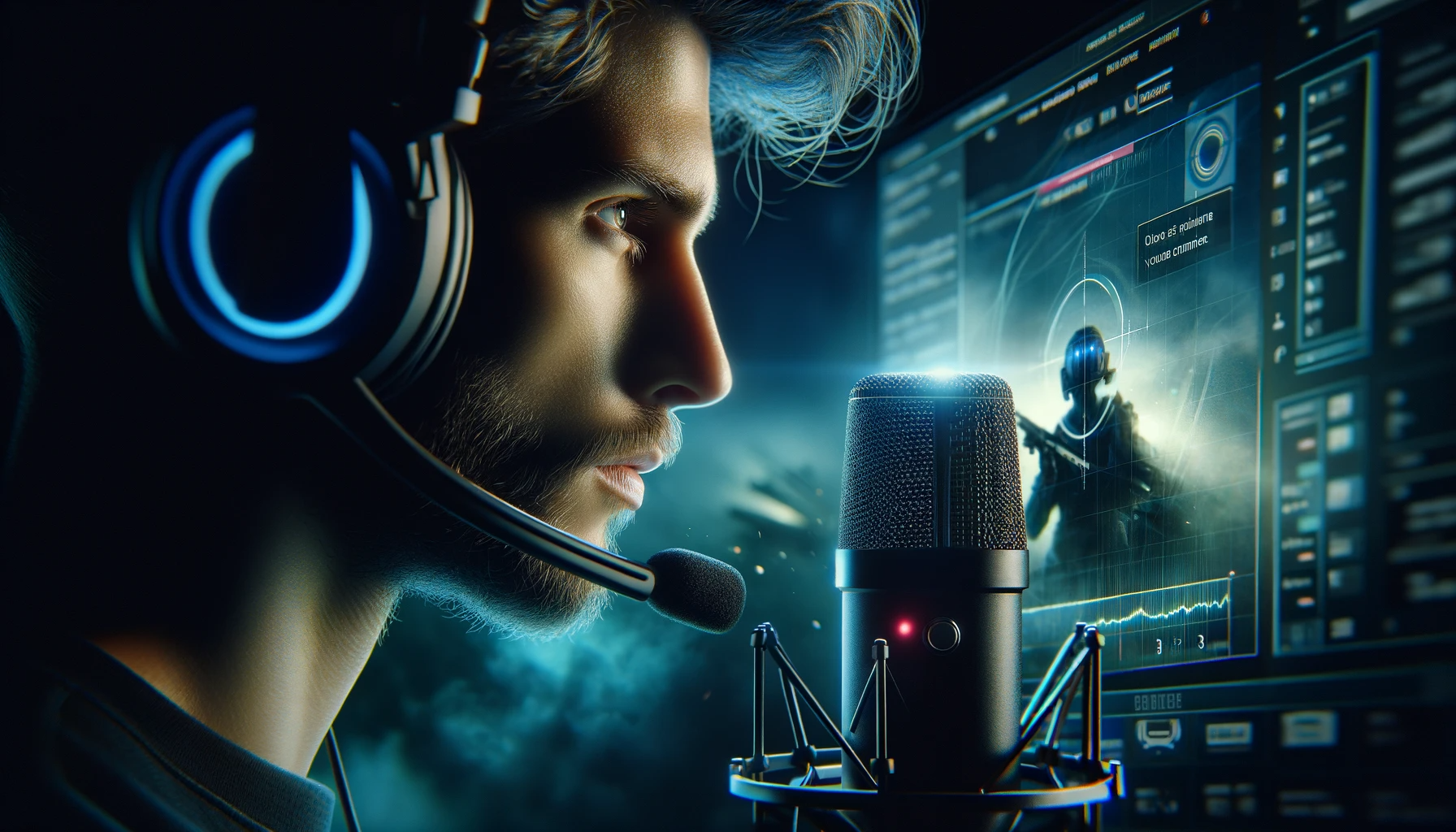In the ever-evolving world of gaming, where player interaction and immersion are paramount, a new technological frontier has emerged – AI-powered voice and speech recognition. Gone are the days when gaming meant simply mashing buttons on a controller. Today, players seek experiences that blur the lines between reality and the virtual worlds they inhabit. This quest for deeper engagement has led to the integration of artificial intelligence (AI) into gaming, reshaping the way players interact with their favorite titles.
The central question that now arises is this: How is AI revolutionizing the gaming experience through voice and speech recognition? This article will embark on a journey to explore this question and delve into the exciting realm where AI and gaming intersect. We will trace the evolution of voice and speech recognition technologies, examine the role of AI in modern gaming, and uncover the ways in which AI-powered recognition is enhancing player interaction. From personalization to adaptation, we’ll uncover the transformative impact of AI in the gaming landscape.
Join us as we venture into the future of gaming, where AI-driven voice and speech recognition technologies are poised to revolutionize player experiences, making them more immersive, dynamic, and personalized than ever before.
The Evolution of Voice and Speech Recognition
Voice and speech recognition technology has come a long way since its inception. Its roots can be traced back to the mid-20th century when researchers began exploring ways to teach computers to understand and process human speech. Early efforts were rudimentary and often required precise pronunciation in controlled environments.
The real breakthroughs started in the late 20th century when more sophisticated algorithms and hardware became available. One of the key milestones was the introduction of Hidden Markov Models (HMMs) in the 1970s, which greatly improved the accuracy of speech recognition systems. This laid the foundation for further advancements.
In the 21st century, the integration of AI and machine learning transformed voice and speech recognition. With the advent of deep learning techniques and neural networks, systems became capable of understanding natural language and context. This transition marked a significant shift from basic voice commands to more nuanced and conversational interactions.
Today, AI-driven voice and speech recognition have reached unprecedented levels of accuracy and versatility. They can understand accents, dialects, and even multiple languages, making them an integral part of various applications, including gaming.

The Role of AI in Modern Gaming
AI plays a pivotal role in modern gaming, reshaping the industry in profound ways. It goes beyond just providing opponents in single-player games; AI is now intricately woven into the fabric of game design and player experiences.
One of the primary areas where AI shines in gaming is character behavior. NPCs (non-playable characters) are no longer limited to rigid, pre-programmed scripts. Advanced AI algorithms enable NPCs to exhibit complex behaviors, react dynamically to player actions, and even learn from their interactions. This dynamic character behavior enhances the realism and immersion of the gaming world.
Virtual environments in games have also benefited from AI. Procedural generation techniques, powered by AI, can create vast and diverse game worlds with minimal human intervention. This not only saves time and resources but also ensures that players encounter unique and unpredictable challenges in each playthrough.
Moreover, AI is used to optimize game mechanics. Difficulty levels can be dynamically adjusted based on a player’s skill level, ensuring that everyone enjoys a challenging yet achievable experience. AI-driven game analytics also help developers understand player behavior and preferences, allowing for the customization of in-game content.
In essence, AI has become the backbone of modern gaming, enabling richer narratives, immersive experiences, and personalized gameplay. It’s no longer just about defeating opponents; it’s about the seamless integration of AI to create worlds that adapt and respond to each player’s choices and actions.
AI-powered Voice and Speech Recognition
AI-powered voice and speech recognition have ushered in a new era of convenience and accessibility in gaming. These technologies leverage the capabilities of artificial intelligence to understand and respond to natural language, transforming the way players interact with games.
At the heart of AI-driven recognition is the use of deep learning algorithms and neural networks. These technologies enable gaming systems to process spoken words, interpret their meaning, and execute corresponding actions within the game. This goes far beyond simple voice commands; it allows for genuine conversations with in-game characters or assistants.
One notable example of AI voice recognition in gaming is the integration of virtual companions or assistants. These AI-driven entities can assist players with tasks, provide guidance, or even engage in meaningful dialogues. Players can ask questions, give commands, or engage in banter, creating a more immersive and dynamic gaming experience.
The benefits of AI-powered recognition extend beyond immersion. They enhance accessibility for players with disabilities, allowing them to enjoy games through voice commands rather than traditional controls. This inclusivity is a significant step forward in making gaming more accessible to a wider audience.
Overall, AI-powered voice and speech recognition are redefining player interactions in gaming. They offer convenience, immersion, and accessibility, making games more engaging and enjoyable for players of all backgrounds and abilities.
Enhancing Player Interaction
AI-driven voice and speech recognition have revolutionized player interaction in gaming, bringing a new level of immersion and convenience. Players can now communicate with the game environment and characters through real-time voice commands, making gameplay more engaging and intuitive.
Real-time voice commands allow players to control in-game actions simply by speaking. For example, in a first-person shooter game, a player can instruct their character to reload, switch weapons, or use a specific ability verbally. This eliminates the need for complex button combinations or menu navigation, streamlining the gaming experience.
Multiplayer communication has also seen significant improvements with speech recognition. Players can communicate with their teammates using natural language, strategize in real-time, and coordinate actions more effectively. This enhances the collaborative aspect of multiplayer games, making teamwork smoother and more enjoyable.
Furthermore, AI-driven recognition enables voice chat with in-game characters. This creates dynamic interactions where players can engage in dialogues, ask questions, or make decisions vocally. In role-playing games, for instance, players can have in-depth conversations with NPCs, influencing the storyline and character relationships.

Personalization and Adaptation
AI in voice and speech recognition brings personalization to gaming experiences, tailoring them to individual player preferences. This level of customization goes beyond gameplay mechanics, affecting storytelling, difficulty, and even the gaming world itself.
Adaptive storytelling is a significant aspect of personalization. AI analyzes player choices and actions to dynamically alter the narrative. The storyline unfolds in response to the player’s decisions, creating a unique and personalized experience with branching paths and multiple endings.
Dynamic difficulty adjustment is another key feature. AI continuously evaluates a player’s skill level and adapts the game’s challenge accordingly. If a player is struggling, the AI may reduce the difficulty to ensure a smoother experience. Conversely, if a player finds the game too easy, the AI can increase the challenge to keep it engaging.
AI also plays a crucial role in creating personalized gaming worlds. Procedural generation techniques, guided by AI algorithms, can generate environments, quests, and challenges based on a player’s preferences. This results in a gaming world that aligns with the player’s interests and playstyle.
Challenges and Limitations
While AI-driven voice and speech recognition offer significant benefits to gaming, they also come with challenges and limitations that need to be addressed.
One challenge is the recognition of diverse accents and languages. AI systems may struggle with understanding accents or dialects that deviate from standard pronunciation. This can lead to frustrating experiences for players whose native language or accent isn’t well-supported.
Privacy concerns also arise with voice recognition. Players may be hesitant to use voice commands in games due to worries about their conversations being recorded and stored. Game developers must implement robust privacy measures and transparency to address these concerns.
Continuous improvement is essential as well. AI voice recognition systems require ongoing updates and refinements to keep up with evolving language patterns and player preferences. Developers must commit to enhancing these systems to ensure accuracy and user satisfaction.
Despite these challenges, AI-driven voice and speech recognition continue to enhance gaming experiences, offering greater immersion, personalization, and convenience to players. The gaming industry’s collaboration with AI technology is poised to evolve and overcome these limitations in the coming years.
Future Prospects
The future of AI-driven voice and speech recognition in gaming holds exciting possibilities that could redefine the way players engage with their favorite titles. As technology continues to advance, several key developments are on the horizon.
One of the most promising advancements is emotion recognition. AI systems are being trained to analyze not only the words spoken but also the tone and emotions conveyed in a player’s voice. This means that games could become more attuned to a player’s emotional state, allowing for more dynamic and emotionally engaging experiences. For example, if a player expresses frustration, the game might respond with a more supportive and encouraging tone.
Context-aware responses are another frontier. AI could become better at understanding the context of player commands. This means that players can engage in more natural and context-aware dialogues with in-game characters. For instance, if a player asks a character about their background, the AI can respond with relevant information based on the game’s narrative context.
In the years to come, AI-driven recognition may also extend beyond voice and speech. Gesture recognition, facial expressions, and even brain-computer interfaces could play a role in how players interact with games. This opens up new possibilities for immersive gameplay experiences.
These advancements in AI-driven recognition are likely to shape the gaming industry significantly. Games will become more emotionally resonant, adaptable to individual player preferences, and immersive in ways we can only imagine. The integration of AI in gaming interaction is poised to redefine what it means to play a video game.

Conclusion
In conclusion, AI-powered voice and speech recognition have ushered in a new era of gaming interaction, offering players unprecedented levels of immersion and personalization. The article has explored the evolution of this technology, its role in modern gaming, and the various ways it enhances player interaction and convenience.
We’ve seen how AI-driven recognition enhances player immersion through real-time voice commands, improving multiplayer communication and enabling voice chat with in-game characters. Moreover, AI personalizes gaming experiences by adapting storytelling, adjusting difficulty levels, and tailoring gaming worlds to individual preferences.
While there are challenges to overcome, including accent recognition and privacy concerns, the future of AI in gaming interaction looks promising. Emotion recognition and context-aware responses are on the horizon, promising even more emotionally engaging and context-aware gaming experiences.
As we look ahead, it’s clear that AI-driven recognition will continue to shape the gaming industry, offering players ever more captivating and personalized experiences. The gaming landscape is evolving, and AI is at the forefront of this transformation, redefining the way we play and experience video games.